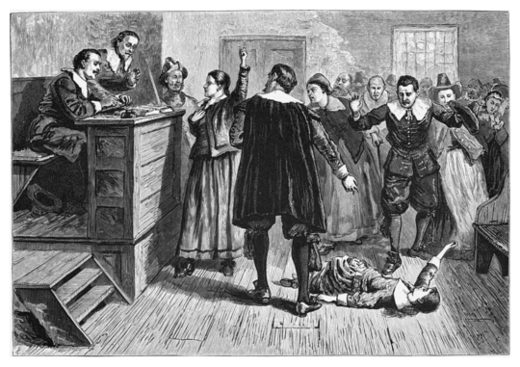
One theory recently gaining exposure thanks to bloggers comes from a 2004 college thesis that places the blame on something we think of as a strictly modern phenomenon: climate change.
Proposed in a Harvard thesis, the paper by economist Emily Oster has earned attention due to the modern swirl of controversy surrounding the possibility that human interaction has altered world temperatures.
Currently an assistant professor at the University of Chicago, Oster linked periodic outbreaks of violence against people accused of witchcraft with dramatic temperature drops.
"The most active period of the witchcraft trials (mainly in Europe) coincides with a period of lower-than-average temperature known to climatologists as the 'little ice age,'" Oster wrote. "The colder temperatures increased the frequency of crop failure, and colder seas prevented cod and other fish from migrating as far north, eliminating this vital food source for some northern areas of Europe."
When crops failed, "people would have searched for a scapegoat in the face of deadly changes in weather patterns," she wrote. Thus, desperate people traced their troubles to unpopular neighbors and outcasts allied to the devil.
Oster noted that the persecutions "spread even across the Atlantic Ocean to Salem, Massachusetts."
Moreover, she added, "The coldest segments of this 'little ice age' period were in the 1590s and between 1680 and 1730."
Assuming Salem's temperatures were not very different from those in Europe, this latter period includes the year of the witch trials.
Salem State University history professor Tad Baker is intrigued by Oster's views.
"It makes a lot of sense," he said.
He believes there are clues in diaries and sermons pointing to the fact that cold weather and poor harvests likely coincided with the witch trials.
Further, he plans to seek out more scientific measurements, which are made by examining things like tree rings.
Baker is writing a book on the witchcraft era under the appropriately meteorological working title A Storm of Witchcraft.
A clue to the weather, Baker said, are documents showing a key player in the Salem drama: "Rev. (Samuel) Parris is arguing with his parish over the wood supply." Without adequate fuel, a Colonial home, lacking insulation and central heat, could be pretty miserable.
"The higher the misery quotient, the more likely you are to be seeing witches," Baker said.
He cautions, however, that the cause of the uproar is probably too complex to be traced to a single source.
Danvers archivist Dick Trask, an expert on the era, was not surprised to hear the climate-change theory. Nor was he convinced. He's heard all of the explanations and says, "These theories tell us more about the present than they do about the past."
While acknowledging that all this happened in what was likely a time of climate cooling, Trask notes that people are often using their own experiences to explain what was happening three centuries ago. For example, he points to the 1970s notion that ergot was the culprit.
A fungus on rye plants, ergot would have created hallucinations for the unknowing farmers who processed and ate the grain. That perhaps explains the "specters" or visions that accusers claimed to see.
It is no coincidence that the 1970s was an era of experimentation with drugs, including hallucinogens, Trask said. In the 19th century, a time of religious experimentation, came the suggestion that it was a Puritan power grab by religious figures who felt their authority slipping away.
In the 1960s, socialists framed the upheaval as an effort by greedy landowners to steal the property of the victims.
More recently came the link to post-traumatic stress syndrome, which points to the fact that many of those involved had been exposed to violent American Indian attacks and had seen family members slaughtered.
Oster's research is being cited now by conservative writers, including the "Powerline" blog, to rebut the impression that climate change is a recent phenomenon.
Perhaps what's most remarkable is the fact that the quest to discover the reason for the witch trials has occupied so many for so many years. References to Salem as "hag-ridden" can be found in documents beginning almost immediately after the trial was completed, Baker said.
And they have never stopped.
"We all love a mystery," Baker said. Worse was done in Europe, with thousands of victims killed over the centuries. But perhaps in America, the expectation was for something better.
"I honestly do think Salem is in America's psyche," Baker said. "It's unfinished business."



Comment: See: Laura Knight-Jadczyk's Witches, Comets and Planetary Cataclysms for a fuller explanation of the phenomenon.